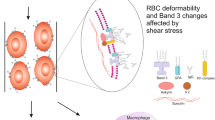Abstract.
The differential diagnosis of anemia must consider immune hemolytic anemias as a frequent cause. Whereas detection of anti-red blood cell (RBC) alloantibodies frequently induced by immunogenic stimuli (transfusion, pregnancy) is performed by routine serology, diagnosing autoimmune hemolytic anemias or drug-induced hemolytic anemias remains a challenge, usually requiring close collaboration of a number of disciplines. Positive direct antiglobulin test (Coombs’ test) represents a central criterion in diagnosing immune hemolytic anemias, leading to further detailed analyses. The most-severe type of immune-mediated hemolysis is acute intravascular hemolysis after ABO incompatible RBC transfusion. This review highlights underlying biochemical aspects, immunohematological diagnostics, and the clinical relevance of RBC allo- and autoantibodies, including paroxysmal nocturnal hemoglobinemia and drug-induced hemolysis. Finally, current and partly experimental therapeutic strategies of immune hemolytic anemias are summarized.
Similar content being viewed by others
Author information
Authors and Affiliations
Corresponding author
Rights and permissions
About this article
Cite this article
Pruss, A., Salama, A., Ahrens, N. et al. Immune hemolysis-serological and clinical aspects. Clin Exp Med 3, 55–64 (2003). https://doi.org/10.1007/s10238-003-0009-4
Received:
Revised:
Issue Date:
DOI: https://doi.org/10.1007/s10238-003-0009-4



